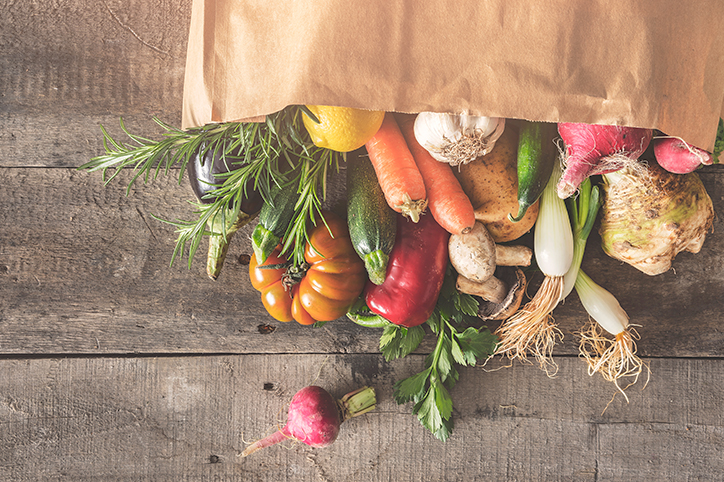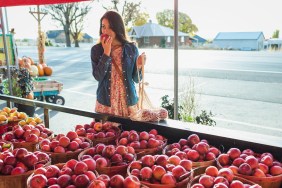When I married my husband, I knew that there would be certain lifestyle choices that he would never bend on. He never manages to get his damn socks in the hamper, he loves to be outside no matter the weather, and we would always eat organic without question. Now that we have three kids and life is dramatically more expensive, eating organic has become occasionally tricky but we make it work. These are some of the things we do to make sure our food is as clean as possible without going over our budget:
Gardening
Gardening doesn’t have to be a complicated science (although don’t tell my husband with the two green thumbs I said that!) With as little space as a front porch and some containers to a giant backyard with acres of soil to plot out rows of corn, anyone can grow their own food.
The best part of growing our own food is that it gives our children an up close and personal understanding of where food comes from, how long it takes to grow it, and the importance of not wasting. Speaking of which…
Know your waste
We started keeping a compost bucket under our kitchen sink. The most effective way to show your family how much food is wasted is to literally show them how much food they wasted. At our house, if someone doesn’t finish that peanut butter sandwich then we all know about it because it’s in the compost bucket. This has dramatically changed the way we eat and cut down on our grocery bills because we buy what we will actually eat and not what we think we want.
Go for the Dirty Dozen
If food cost is especially prohibitive in order to stick to being organic then we make sure that the foods on the famous Dirty Dozen list are what we buy organic. The Dirty Dozen is a list of foods that are updated every year by the Environmental Working Group and lists foods that are the most contaminated by pesticides, herbicides, and fungicides. The 2019 list includes strawberries, spinach, kale, nectarines, apples, grapes, peaches, cherries, pears, tomatoes, celery, and potatoes. Yikes!
Buy in bulk
There are so many organic options available that are frozen, canned, and in bulk these days. And you don’t have to limit yourself to boojee brand names from Trader Joe’s. Your local grocery store probably has a variety of national brands with organic options for only slightly more money than non-organic. There are a few items like chicken breasts, ground beef, bags of veggies and even French fries and tater tots that I like to stock up on when they go on sale. I buy them and then I can freeze them and use them at a later date.
Get cooking…from scratch
Even with very little time on my hands, I still manage to cook primarily from scratch so that I can control the ingredients in our meals. With the help of my Instant Pot or Crock Pot, I can throw together a super healthy dinner, lightning fast and not worry about chemicals in my food.
On weekends, we meal plan at our house. The whole family gets a say in what we eat and they definitely help to prep. Getting the kids in the kitchen increases the chances of them actually eating the meal when it’s done!
Meet your local farmer
Farmers markets are cool now, which is great because now most cities and towns host a farmer’s market once or twice a week. You can buy meat and produce baked goods, and even personal care items directly from the people who grow and make them. Fresh produce is dirt cheap at most farmer markets, making it totally worth supporting them. You can even sign up for a Community Supported Agriculture CSA subscription, which is like a beauty box but filled with organic foods grown specifically for you.
Eating organic doesn’t have to break the bank ad it can definitely help encourage lots of truly great lifestyle habits that will benefit the health of you and your family and the earth.








